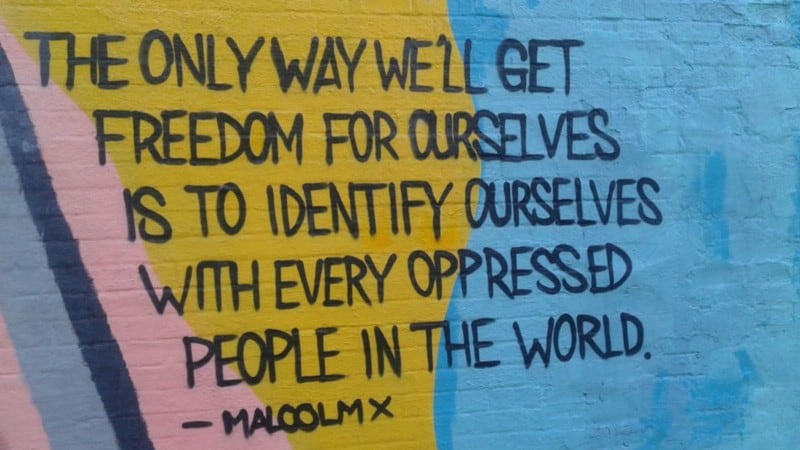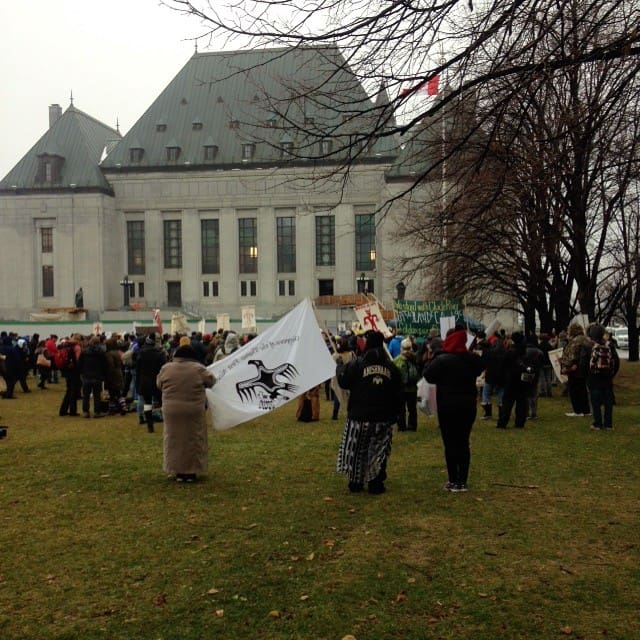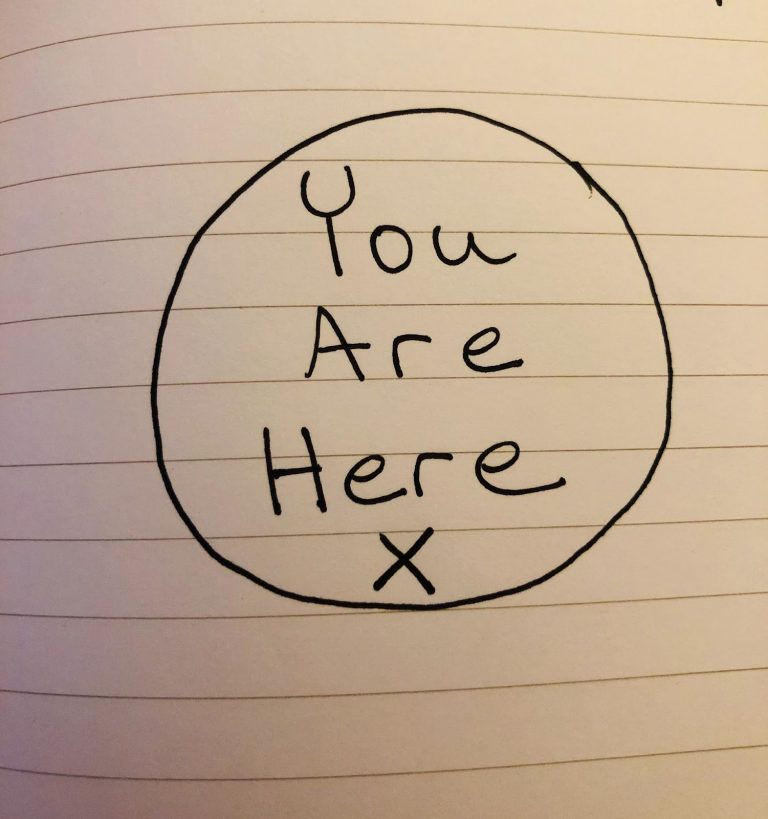Building an anti/beyond/despite capitalist movement
By Becky Ellis

Permaculture is a philosophy and set of practices aimed at creating regenerative human spaces that mimic natural eco-systems. The concept was developed in the 1970s based on observations of the ecological systems created by Indigenous and “traditional” communities around the world. The philosophy of permaculture offers a counter-hegemonic worldview especially regarding the place of human societies within nature. While permaculture can be thought of as a movement, some of its proponents insist it stay de-politicized and professionalized as a system of ecological design. Indeed, some of the practices of permaculture limit its potential to grow as a movement — thereby also limiting its effectiveness as a vehicle for and model of change.
I believe that permaculture proponents need to move away from promoting permaculture as primarily a set of ecological design practices and principles. Instead, it must be built as a dynamic social movement that provides a vision for radical transformation of human societies. In doing so, the permaculture movement must concern itself with social and environmental justice — actively resisting racism, colonialism, classism and sexism. The permaculture movement must find ways to become an accessible and participatory movement with a strong following in diverse, urban neighbourhoods. The emphasis on land ownership and entrepreneurship must be replaced with collective action and creation of anti/beyond/despite-capitalist commons.
Radical Potential of Permaculture
Humans currently face an unprecedented level of crisis including widespread environmental destruction, human-caused climate change, the continued threat of nuclear war, and human poverty and famine. The potential of permaculture to contribute to urgently necessary transformative change lies in the underlying philosophy and ethics of permaculture: especially in its vision of complex human societies functioning co-operatively within regenerative eco-systems. Permaculture has the potential to fundamentally challenge what Jason Moore calls “capitalism in the web of life”. The Permaculture ethics is most often described as: Care for Earth; Care for People; Fair Share. If carried out consistently, these ethics would lead to a profoundly anti-capitalist approach to organizing human societies.
Critiques of permaculture
Although Permaculture has the potential to contribute to transformative societal change, this potential is weakened by its focus on professionalization, land ownership, and entrepreneurship which tends to reinforce sexism, racism, and class bigotry and to commodify practices, skills, and knowledges that should be uncommodifiable.
In the summer of 2016 during a session on Decolonizing Permaculture at the Building Resilient Communities Convergence in California, workshop participants voiced critiques of the permaculture movement relating to class, race, and the continuation of colonial attitudes towards Indigenous People and people of the Global South. I will address several of these common critiques — particularly critiques of practices that lead to exclusion and commodification.

Exclusionary
Lack of access to land is often raised as a barrier to participation in permaculture. Land ownership in North America — both rural and urban — is prohibitively expensive for many people but many permaculture practices are based on land ownership including the creation of perennial gardens, the growing of food forests, major earth works such as berms and swales and the building of cob structures. While these projects are possible as community initiatives on public or communal land, to create community projects like these requires highly developed organizing skills, something in which few people are trained or experienced. In urban centres, where public land can be highly contested, the creation of these projects often requires sustained activist campaigns that are grounded in an understanding of the complex connections between urban land and race, class, and gender.
Permaculture practitioners do not just focus on building projects in their own communities — some set up businesses and farms in the Global South. There is a danger that these international permaculture initiatives can contribute to the dispossession of local people. Issue 4 of the North American edition of Permaculture magazine included an article that celebrates “market-driven restoration” as a type of permaculture entrepreneurship. This article focuses on a for-profit business in Paraguay owned by two white American men that brands Yerba Mate as a superfood to North American consumers. As White et al (2013) point out, “the application of the market paradigm to the environment (‘market environmentalism’) has become an important trend which reinforces a growing ‘metabolic rift’, and so the separation of people and nature”. These projects build “…on long histories of colonial and neo-colonial resource alienation in the name of the environment” (p 11).
A focus on individual land ownership further entrenches the displacement and attempted genocide of Indigenous people that has occurred throughout much of the world. Aside from collective approaches to land ownership (for example, land trusts), it is essential that permaculturalists from settler backgrounds support the struggle for Indigenous land rights — globally and within their own region. It is also important to move our language from one of ownership of land to one of care-taking and attachment.
Limits of professionalization and the entrepreneurial model
For the last few years leading permaculture teachers and designers have been discussing the establishment of a standardized diploma program for permaculture practitioners. Currently the established way to become a permaculture practitioner is by attending a Permaculture Design Course. A quick look at PDCs offered in North America this summer show the majority to be the standard two-week immersive program, with a price range of $800–1500. People who attend PDCs usually travel and must live on site for the two weeks. This limits PDCs to people who can afford the fee and the travel costs and to people who can be away from family or work for 14+ days.
Proponents of the professionalization of permaculture argue that it can establish mainstream legitimacy for the movement which has been viewed as a fringe movement and that it can provide “right livelihoods” for people. However, professionalization of what is also a social and environmental movement has fundamental problems that may limit the transformative potential of permaculture. As Ivan Illich points out in his seminal book Deschooling Society “People who have been schooled down to size let unmeasured experience slip out of their hands. To them, what cannot be measured becomes secondary, threatening…Under instruction, they have unlearned to “do” their things or “be” themselves, and value only what has been made or could be made” (40). Illich goes on to critique the development of professions for the way in which they disempower people from active participation in their own lives. Professions, he argues, are “dominant, authoritative, monopolistic, legalized and, at the same time, debilitating and effectively disabling the individual” (Illich, 1977, 20). If permaculture aims to help people connect deeply as part of nature; to reestablish forms of, what Marx described as, “sensuous human activity” and, to contribute to creating a regenerative and just society, then this push for professionalization seems inherently problematic.
Some people have also critiqued the emphasis on entrepreneurship within permaculture. Instead of encouraging permaculturalists to be community organizers or activists, they are more often encouraged to find ways to establish a livelihood as a landscape designer, farmer, or educator. Not only are small businesses and small farms notoriously hard to set up, requiring capital and bank loans, but this also risks turning permaculture into a for-profit enterprise that commodifies practices, techniques, and ideas that should be uncommodifiable. As Federici and Caffentzis (2014) argue, “We live now in a world in which everything, from the water we drink to our body’s cells and genomes, has a price tag on it and no effort is spared to ensure that companies have the right to enclose the last open spaces on earth and force us to pay to gain access to them” (p i94). What does turning permaculture into a practice easily consumed within capitalism mean for the movement?
This brings us back to the deeply problematic issue of colonialism and racism. Mollison and Holmgren, by their own admission, gleaned the knowledge and skills of indigenous and “traditional” communities, creating a clear set of easily digestible principles that make up the concept of permaculture. They did this partly as an attempt to confront the degradation of nature by industrial agriculture and capitalist development. But some of the knowledge and skills they gathered were developed by specific, identifiable communities of people who are rarely acknowledged within the literature. Acknowledging the innovation and significant contributions of Indigenous people is an important part of the decolonization process. This means that we should not try to own, brand, or commodify these skills and practices. In fact, decolonizing permaculture means we must go even further than acknowledgment and de-commodification, as I will discuss later.
Other knowledge and skills incorporated within permaculture practice are, arguably, common to non-capitalist agrarian communities and can be viewed as part of humanity’s common knowledge and heritage about how to live within systems of nature. If permaculture is a movement that seeks to draw from the common heritage of humanity, it should be available to all. Just as seeds are widely regarded by food activists as part of the commons of humanity; so, should the skills and practices which enable humans to live regeneratively in natural ecosystems. The question of whether permaculture needs to be professionalized to gain mainstream legitimacy is entirely the wrong question. One of the principles of permaculture is to use edges and value the marginal. As uncomfortable as it may be for some people to be on the edges of mainstream society — if we agree that our society is based on a system of exploitation, oppression, and alienation of people and the Earth — maybe the edges is exactly where we need to not only be but to bring others.
Radical imagination of the possible
Permaculture is most transformative when it offers a radical imagination of the possible — a philosophy and set of practices based on cooperation, co-creation, and solidarity not just between humans but with extra-human nature. Permaculture is one of several counter-hegemonic worldviews including agroecology and Pan-Indigenous movements — that posits that humans are an integral part of the Earth’s ecosystems and have, for much of humanity, played a cooperative, beneficial role, co-creating ecosystems with other beings. Permaculture teaches that the norm within healthy ecosystems is that animals, plants, fungi, and bacteria form co-operative –not competitive — relationships with one another. The Earth is full of abundance, permaculturalists will point out, not in the form of capitalist commodities but in the form of energy from the sun and the wind, water, food, and life itself.
Permaculture is strongest as a critique of and alternative model to capitalist commodification of ‘nature’ as well as to Malthusian-inspired environmentalist rhetoric about scarcity and population growth. The problem is not people, permaculture philosophy contends, but the current system under which people are forced to live. Permaculture has the potential to be part of visioning a post-capitalist future alongside other social and environmental justice movements. Although the movement began as a re-imagining of agrarian landscapes in advanced capitalist countries such as Australia, it has most emancipatory potential in re-imagining how cities might be spaces in which humans and nature co-create and co-operate. As Jane Jacobs points out, “lively, diverse, intense cities contain the seeds of their own regeneration, with energy enough to carry over for problems and needs outside themselves” (1961, p. 448).

One of the benefits of creating permaculture projects in cities is that urban neighbourhoods can more easily develop into vibrant communities based on difference where, as Iris Young explained, “persons and groups interact within spaces and institutions they all experience themselves as belonging to” (1990, p. 227). Toby Hemenway, a popular permaculture author and teacher from the United States, wrote extensively about the greater potential to create permaculture projects in cities rather than the countryside, “the great strength of any city,” he wrote, “is the social capital: the synergies and opportunities generated by creative people working together” (2000, p 230). This reaffirms one of the most important principles of permaculture — that diversity creates resilience. As Pandora Thomas, founder of the Black Permaculture Network and Starhawk, founder of Earth Activist Training state, “We are committed to envision, design and create a world in which we affirm and celebrate human diversity, where we can learn from one another’s perspectives and support one another’s struggles” (Thomas and Starhawk 2016).
Solidaristic alliances
This leads to the question of whether permaculture should be an explicitly activist movement. In order to form relationships with other humans and extra-human nature that are based on co-creation and cooperation, we must be involved in social and environmental justice activism. In their statement in support of the Black Lives Matter movement Starhawk and Pandora Thomas argue that, “…We cannot care for the people unless we assure justice for all people and assert the value of every person’s life” (Thomas and Starhawk 2016). They further argue that the permaculture principle of observing patterns within eco-systems means we must point out and interrupt patterns of oppression and exploitation in human societies. As they argue, “…we see a recurring pattern of devaluing and dehumanizing people of color that extends back through the centuries…We cannot build a vibrant future unless we acknowledge this painful past and recognize that its legacy continues today…our economic, political and social systems can only find ecological balance when they are founded upon justice” (ibid).
The project of decolonizing permaculture is necessary because it is a movement focused on the use of land and because of its problematic co-option of Indigenous knowledge. This means that it must be a movement that builds solidaristic alliances with Indigenous communities. As Harsha Walia argues “Non-natives must be able to position ourselves as active and integral participants in a decolonization movement for political liberation, social transformation, renewed cultural kinships and the development of an economic system that serves rather than threatens our collective life on this planet” (Walia, 2012). Decolonizing any system, structure, and practice in our society must start with difficult yet hopeful conversations about returning the land to Indigenous people.

A protest in support of Chippewa of the Thames First Nation’s struggle against the extension of the Line 9 pieline in Ottawa, ON.
Decolonizing permaculture also means building relationships with extra-human nature that acknowledges the ways in which they, too, resist the hegemony of corporate capitalism — and this means also acting in solidarity with them. As Moore (2015) points out, “…all life rebels against the value/monoculture nexus of modernity, from farm to factory…the struggle over the grip of commodification is…a contest between contending visions of life and work…superweeds frustrate genetically modified agriculture; animals resist their assigned role as objects and forces of production” (p. 205).
Anti-capitalist commoning
One of the most promising aspects of permaculture is its potential to contribute to projects that Chatterton and Pickerill (2010) describe as interweaving “‘anti’, ‘post’, and ‘despite’ capitalisms” (p 476). Since the creation of the concept of permaculture, some practitioners have concerned themselves with creating autonomous human communities that serve as a critique and alternative to the dominant society. This sounds very close to the concept of anti-capitalist commons articulated by Federici and Caffentzis (2014) as, “autonomous spaces from which to reclaim control over the conditions of our reproduction, and as bases from which to counter the processes of enclosure and increasingly disentangle our lives from the market and the state” (p i100).
Creating anti-, post-, and despite-capitalist commons may seem tricky, especially with pressures from both the market and the state. There is constant danger of such projects being co-opted. Federici and Caffentzis warn that, “Either commons are a means to the creation of an egalitarian and cooperative society or they risk deepening social divisions, making havens for those who can afford them and who can therefore more easily ignore the misery by which they are surrounded” (p. i100). However, there are projects and initiatives both within and outside the permaculture movement that offer hopeful possibilities. These include food forests on public lands, the reclamation of vacant lots and abandoned buildings as community spaces, and worker-owned cooperatives. The permaculture movement can also learn from movements that use occupations as a strategy including urban squatters, workers who recover factories, and land-less peasants. These projects and initiatives can complement activist organizing, “…Anti-capitalist commons are not the end point of a struggle to construct a non-capitalist world, but its means, “Federici and Caffentzis argue, “For no struggle will succeed in changing the world if we do not organize our reproduction in a communal way” (p. i100). The decision to remain on the edges of our society — as strong critics and social experimenters — may be filled with the uncertainty, complexity, and messiness of human life but it also allows us the space for radical imaginations to grow and multiply.
*This paper was originally given as a talk at the Organizing Equality conference in London, ON in March 2017*
Originally published at permacultureforthepeople.org on November 2, 2017.
References
Caffentzis, George and Silvia Federici. 2014. “Commons Against and Beyond Capitalism.” Community Development Journal 49: i92-i105.
Hemenway, Toby. 2000. Gaia’s Garden: A guide to home-scale permaculture. Chelsea Green: White Rivers Junction.
Illich, Ivan. 1970. Deschooling Society.
Illich, Ivan. 1977. Disabling Professions. Marion Boyers: London
Jacobs, Jane. 1961. Life and Death of Great American Cities. New York: Random House
Mollison, Bill. 1988. Permaculture: A Designer’s Handbook. Tagari Publications: Tasmania
Park, Susan Juniper. 2016. Decolonizing Permaculture: Building Resilient Communities Convergence 2016. Directed by Natasha Florentino. 2016.
Thomas, Pandora and Starhawk. 2016. “Black Lives Matter: A permaculture perspective”. Permaculture. July 2, 2016
Walia, Harsha. 2012. “Decolonizing Together: Moving beyond a politics of solidarity toward a practice of decolonization”. Briarpatch. Jan. 1, 2012
White, B., S.M. Borras, R. Hall, I. Scoones, and W. Wolford (2012): ‘The new enclosures: critical perspectives on corporate land deals.’ Journal of Peasant Studies, 39(3–4), 619–47.
Young, Iris Marion. 1990. Justice and the Politics of Difference. Princeton, N.J: Princeton University Press



